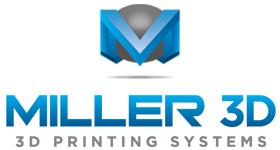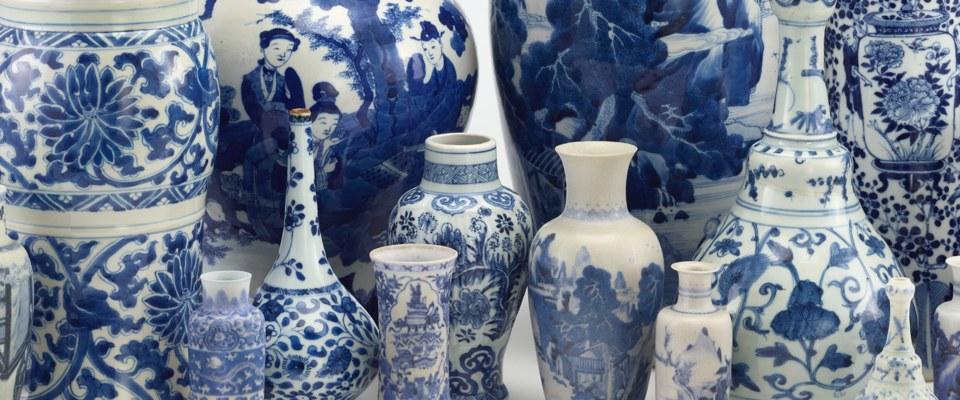Miller 3D & Alfred University Collaborate to 3D Print Chinamania Exhibit for Smithsonian Installation
 By now, most of us are aware of the place 3D printing has established in the world of manufacturing. From the home business to the massive industrial operation, this technology has sprung into the mainstream offering a host of benefits that are indeed changing everything from jewelry making to the creation of automotive parts and medical devices.
By now, most of us are aware of the place 3D printing has established in the world of manufacturing. From the home business to the massive industrial operation, this technology has sprung into the mainstream offering a host of benefits that are indeed changing everything from jewelry making to the creation of automotive parts and medical devices.
And while museums and the items they protect and display may not run the world, they tell us about it, giving a history throughout the ages. 3D printing is actually revolutionizing this arena as well, allowing for ancient bones to be studied more easily, and shared. Many scientists are in strong support of the democratization of artifacts that 3D printing is offering, diminishing the idea of ownership of a find in place of sharing information around the world. We’ve seen the amazing results of this information sharing in paleontologists’ dream studies such as that of Homo naledi and the famed Australopithecus afarensis, Lucy, as well as in progressive museums where they are able to educate and replicate like never before with the power of 3D printing.
The world of preservation is benefiting like never before as well, as documented in a recent project completed by Miller 3D for Alfred University. As the Alfred, New York museum began working on a new display, Walter McConnell, an artist and professor of ceramic arts, contacted the 3D printing systems company to see if they could lend their expertise in replicating a sculpture collection from many years past.This wasn’t just any exhibit either, as it was meant for display at the Smithsonian Institute. Titled ‘Chinamania,’ the porcelain-based installation shows a type of pottery that many may be familiar with, in the classic blue and white painted style. What’s even more fascinating, however, is that they were working with replicas to make further replicas of vessels harkening back to the China’s Kangxi period of 1622-1722.
Obviously these weren’t just plastic pieces being churned out quickly and set out on display. The replicas for the Chinamania display required fastidious production as well as finishing. Miller 3D explained that the process included a number of steps, beginning at the Smithsonian, where they used 3D photogrammetry to capture images of the original collection. Next, McConnell cleaned up the scans, correcting issues such as shadows and varying colors. Once that process was complete, he transferred them to Miller 3D where the design team was responsible for scaling down the replica files down to 40% of the size of the originals.
“Those blue-and-white ceramics… ” states the Arthur M. Sackler Gallery on their web page describing the exhibit, “… also inspired McConnell to create a new work based on 3D-printed replicas. His interest in replication and in the serialized mass production of ceramic forms began after he visited China more than a decade ago. The large kilns and busy factories at Jingdezhen prompted McConnell to look at China as an enduring resource for ceramic production.”
According to the team, as they continued into the 3D printing, the work was still manually intensive due to the intricate attention that had to be paid to detail as the installation was readied for the public. If you are interested in seeing Chinamania in person, these amazing 3D printed replicas are on display at the Arthur M. Sackler Gallery at the Smithsonian Institution.
You can learn more about Miller 3D, a division of AW Miller, here. Discuss in the Chinamania forum at 3DPB.com.
[Sources: Miller 3D; Arthur M. Sackler Gallery]Subscribe to Our Email Newsletter
Stay up-to-date on all the latest news from the 3D printing industry and receive information and offers from third party vendors.
You May Also Like
NSF Awards Kentucky $1M for Advanced Manufacturing
The National Science Foundation has awarded a $1 million grant to the University of Louisville for the Advancing Manufacturing and Building Construction Technologies (NSF AMT) project. This initiative is part...
3D Printing News Briefs, May 11, 2024: 3D Printed Stent, Tower, Sculptures, & More
We’re starting off with medical research in today’s 3D Printing News Briefs, as researchers in Korea used CT images and 3D printing to fabricate an educational simulator for a mastoidectomy....
3D Printing Unpeeled: Wind Turbines, Probiotics and Lenses
TPI Composites, ORNL and Ingersoll Rand are working to make wind turbine tooling segments that can be 18.3 meters long. These elements also include resistive wires that help keep the...
Tethon 3D Releases Cost-effective Bioprinter
Tethon 3D, known for its ceramic-loaded DLP materials, custom resins, and DLP 3D printers, has recently released a bioprinter. Vat polymerization printers like DLP systems have been widely used by...


































